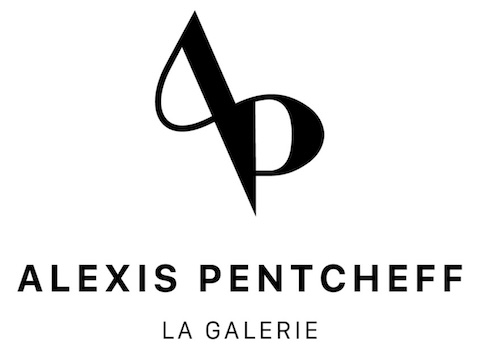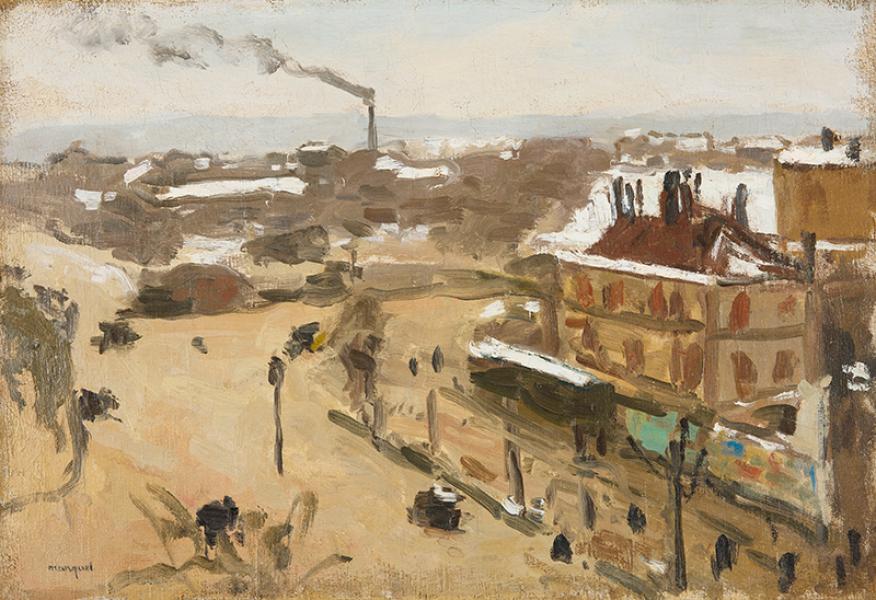Effet de neige, 1902-03
Oil on canvas, signed lower left.
38.20 x 55 cm
History:
Georges Urion
Sale, Galerie Georges Petit, Paris, May 30–31, 1927, no. 66 (titled “La Porte de Versailles, en hiver; temps de neige”)
Van Gelder, acquired at the above sale
Sale, Hôtel Drouot, Paris, March 20, 1950, no. 123 (ill. pl. IX no. 123)
Private collection, São Paulo
Private collection, by descent from above
Certificate of inclusion in the artist’s catalogue raisonné by the Wildenstein Plattner Institute.
Marquet, Snow Effect
Under the pale sky of a Parisian winter, Albert Marquet captures the fleeting atmosphere of an urban snowfall. Powdered rooftops, the ochre street bustling with passersby, the grey smoke rising from the factory on the horizon — all contribute to a vision that is at once realistic and sensitive. Around 1902–1903, Marquet was exploring the effects of light and material with an economy of means that already heralded the singularity of his style.
Far from the excesses of Fauvism that he shared at the time with Matisse and his companions of the Salon d’Automne, Marquet here seeks the truth of an instant, balancing the vigor of line with the subtlety of tone. The snow, rather than asserting itself in dazzling whiteness, dissolves into a restrained harmony, where browns and greys accentuate the melancholy of the scene.
The panorama is that of the Porte de Saint-Cloud, as Marquet perceived it from his apartment on the Avenue de Versailles, where he lived at the beginning of the century. He would return to this motif in 1904 in a version now held at the Cleveland Museum of Art, as well as in several other works, confirming the importance of this landscape in his early explorations. This winter view is not merely a depiction of Paris: it is a portrait of modernity, with its factories, smoke, and busy streets, yet transfigured by the painter’s eye into a silent poetry.

